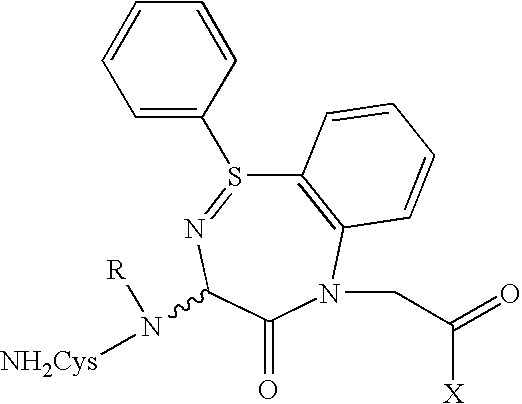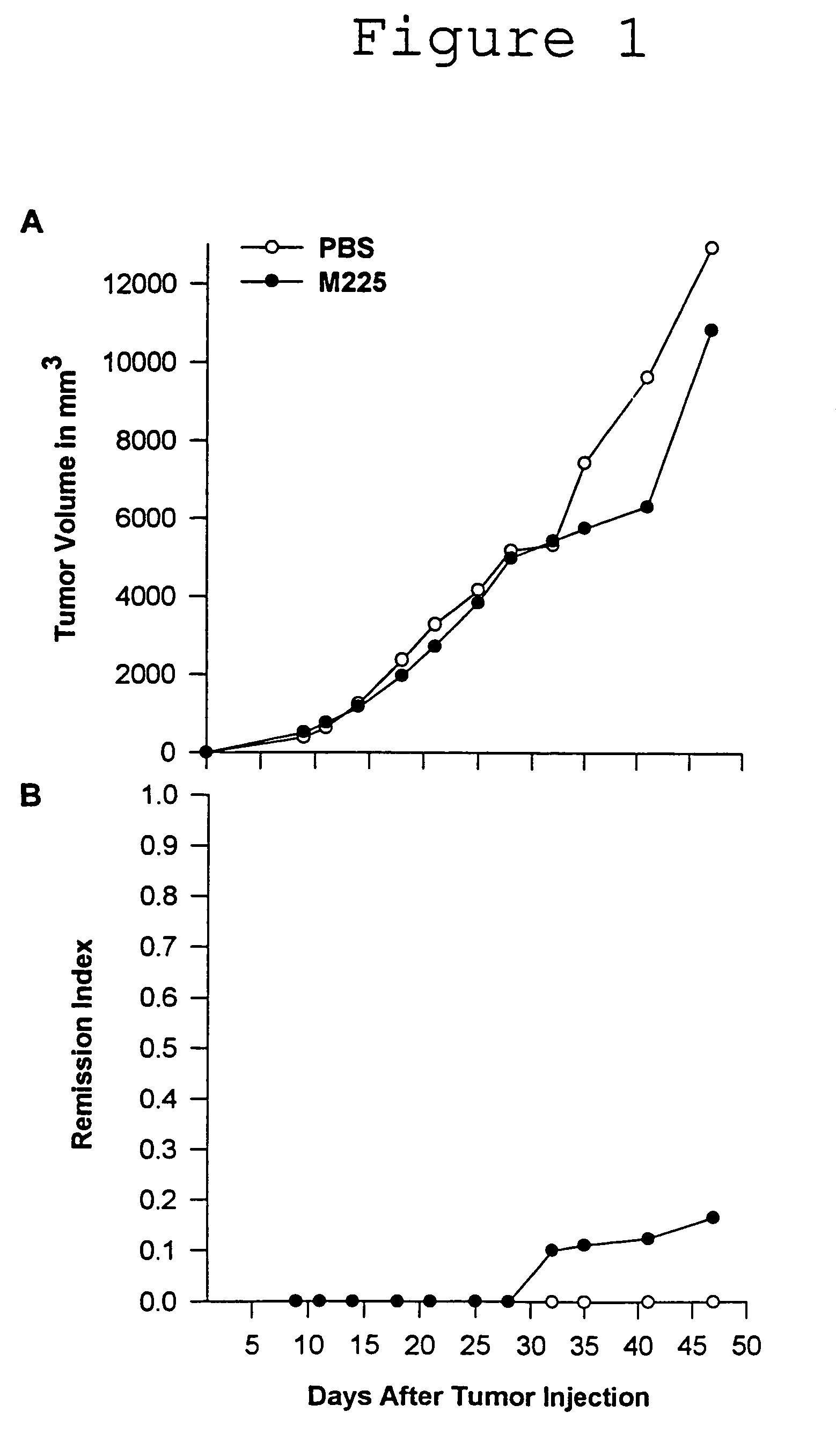Humanized anti-EGF receptor monoclonal antibody
- Summary
- Abstract
- Description
- Claims
- Application Information
AI Technical Summary
Benefits of technology
Problems solved by technology
Method used
Image
Examples
example i
Example I-1
Cell Lines and Media
[0075]A431 cells were routinely grown in a 1:1 mixture of Dulbecco's modified Eagle's medium and Ham's F-12 supplemented with 10% fetal bovine serum, 2 mM L-glutamine, and antibiotics.
[0076]The androgen-independent and dependent human prostatic carcinoma cell lines (DU 145, PC-3 and LNaP) were obtained from the ATCC (Rockville Md.) and routinely maintained in RPMI 1640 medium (Sigma, St. Louis, Mo.) supplemented with 10% fetal bovine serum (Intergen, Purchase N.Y.) and 2 mM L-gluatmine (Sigma). Cells were checked regularly for the presence of mycoplasma.
example 1 – 2
Example 1–2
Preparation and Purification of M225 and C225
[0077]The 225 antibody was grown as ascites in pristane primed Balb / c mice. Ascites fluid was purified by HPLC (ABX and Protein G) and determined to be >95% pure by SDS PAGE.
[0078]Human clinical grade C225 was grown in proprietary serum free medium in 300 liter lots. After clarification, the concentrated broth was purified on a series of chromatographic columns and vialed under asceptic conditions. Purity was determined to be >99% by SDS PAGE.
example i-3
Preparation of Doxorubicin-C225 Conjugates
[0079]C225 doxorubicin conjugates (C225-DOX) were prepared using a modification of the method described by Greenfield et al., Cancer Research 50, 6600–6607 (1990). Briefly, Doxorubicin was reacted with the crosslinking agent PDPH (3-[2-pyridyldithio]propionyl hydrazide) (Pierce Chemical Co.) to form the acyl hydrazone derivative doxorubicin 13-[3-(2-pyridyldithiol)propionyl] hydrazone hydrochloride. C225 was thiolated with the reagent N-succinimydyl 3-(pyridyldithio) propionate and reacted with doxorubicin hydrazone to form a conjugate containing a hydrazide as well as a disulfide bond. The complex was purified by gel filtration at neutral pH. The C225-doxorubicin conjugate was stable at neutral to alkaline pH (pH 7–8) and was stored at 4° C. The conjugate was readily hydrolyzed at pH 6, releasing active Doxorubicin.
PUM
| Property | Measurement | Unit |
|---|---|---|
| Volume | aaaaa | aaaaa |
| Mass | aaaaa | aaaaa |
| Fraction | aaaaa | aaaaa |
Abstract
Description
Claims
Application Information
 Login to View More
Login to View More - R&D
- Intellectual Property
- Life Sciences
- Materials
- Tech Scout
- Unparalleled Data Quality
- Higher Quality Content
- 60% Fewer Hallucinations
Browse by: Latest US Patents, China's latest patents, Technical Efficacy Thesaurus, Application Domain, Technology Topic, Popular Technical Reports.
© 2025 PatSnap. All rights reserved.Legal|Privacy policy|Modern Slavery Act Transparency Statement|Sitemap|About US| Contact US: help@patsnap.com



